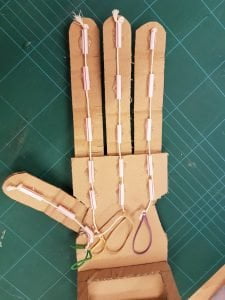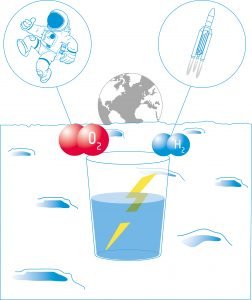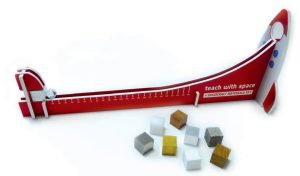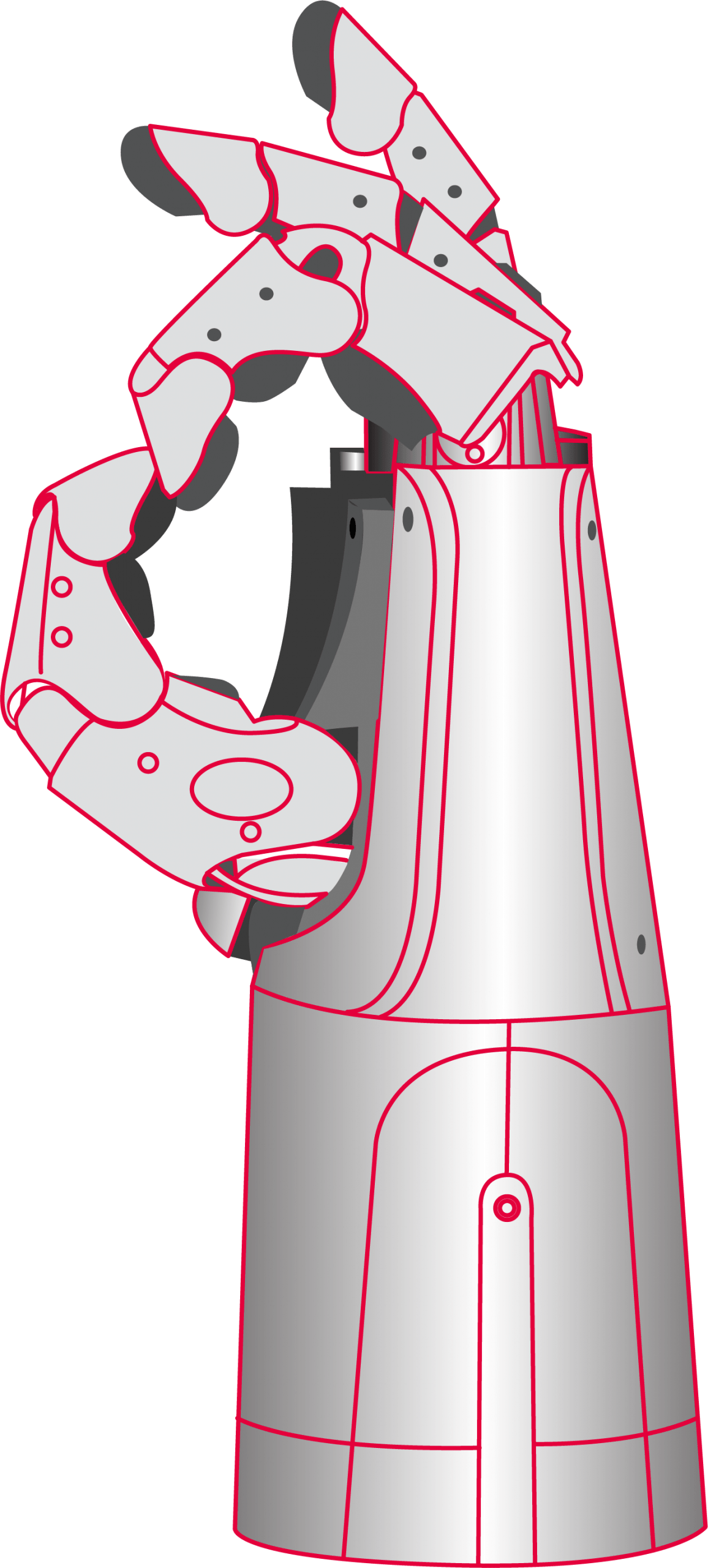Bionic Hand - Κατασκευή ενός βιονικού χεριού
Σε αυτή τη δραστηριότητα, οι μαθητές θα κατασκευάσουν ένα βιονικό χέρι από χαρτόνι, κορδόνια, καλαμάκια και λαστιχάκια. Θα συσχετίσουν το βιονικό χέρι με το δικό τους χέρι για να κατανοήσουν τη λειτουργία των δακτύλων και τη σημασία του αντίχειρα, για να πιάσουν ή να κρατήσουν αντικείμενα με διαφορετικά σχήματα και μορφές.
Οι μαθητές θα μάθουν επίσης ότι δεν θα ήταν δυνατόν να κινηθεί το ανθρώπινο χέρι αν αποτελούνταν μόνο από οστά. Οι μαθητές θα κατανοήσουν πώς λειτουργούν τα οστά, οι μύες, οι τένοντες και οι σύνδεσμοι, συγκρίνοντας τα με τα υλικά που χρησιμοποιούνται στο βιονικό χέρι για την κίνηση των δακτύλων.
Αυτή η δραστηριότητα προετοιμάζεται για 60-90 λεπτά, ανάλογα με την ηλικία των μαθητών. Ωστόσο, ο πόρος αυτός μπορεί να προταθεί ως μέρος ενός σχεδίου εργασίας στην τάξη, που θα περιλαμβάνει και άλλα θέματα μελέτης, όπως οι τέχνες, η γλώσσα και το ανθρώπινο σώμα.
Μαθησιακοί στόχοι
Εύρος ηλικίας:
8-12 ετών
Χρόνος
Μάθημα: 60 - 90 λεπτά ανάλογα με την ηλικία των μαθητών
Διαθέσιμος πόρος σε:
Δραστηριότητα 1: Τι είναι μέσα στο χέρι σας;
Σε αυτή τη δραστηριότητα, οι μαθητές θα μάθουν για το ανθρώπινο χέρι και το ρόλο των οστών, των μυών και των τενόντων.
Εξοπλισμός
Δραστηριότητα 2: Κατασκευάστε ένα βιονικό χέρι
Σε αυτή τη δραστηριότητα, οι μαθητές θα μάθουν τι είναι ένα βιονικό χέρι και πώς λειτουργεί. Θα κατασκευάσουν το δικό τους βιονικό χέρι από χαρτόνι σε ομάδες.

Εξοπλισμός
Δραστηριότητα 3: Δοκιμάστε το βιονικό σας χέρι
Σε αυτή τη δραστηριότητα, οι μαθητές θα εκτελέσουν διάφορες εργασίες με το βιονικό τους χέρι και θα συσχετίσουν τις κινήσεις του βιονικού χεριού με τα δικά τους χέρια.
Εξοπλισμός
Το ξέρατε;
Στο εγγύς μέλλον, αναμένεται ότι πληρώματα αστροναυτών και ανθρωποειδών ρομπότ θα συνεργάζονται για την εκμετάλλευση του διαστήματος.
Και οι δύο πιθανότατα θα χρησιμοποιούν βιονικά χέρια. Τα βιονικά χέρια επιτρέπουν στα ρομπότ να χειρίζονται αντικείμενα που προορίζονται για ανθρώπινη χρήση. Οι αστροναύτες θα επωφεληθούν από τα βιονικά χέρια επειδή ο χειρισμός αντικειμένων στο κενό του διαστήματος μέσω των γαντιών μιας διαστημικής στολής είναι πολύ κουραστικός.
Και οι δύο πιθανότατα θα χρησιμοποιούν βιονικά χέρια. Τα βιονικά χέρια επιτρέπουν στα ρομπότ να χειρίζονται αντικείμενα που προορίζονται για ανθρώπινη χρήση. Οι αστροναύτες θα επωφεληθούν από τα βιονικά χέρια επειδή ο χειρισμός αντικειμένων στο κενό του διαστήματος μέσω των γαντιών μιας διαστημικής στολής είναι πολύ κουραστικός.

Το DEXHAND που αναπτύχθηκε από το Ινστιτούτο Ρομποτικής και Μηχατρονικής DLR
Λέξεις-κλειδιά:

Moon Rover - Κατασκευή ενός ηλιακού οχήματος
Σύντομη περιγραφή: Οι μαθητές θα συγκρίνουν τα πλεονεκτήματα και τα μειονεκτήματα των ανανεώσιμων και των μη ανανεώσιμων πηγών ενέργειας και θα μελετήσουν απλά ηλεκτρικά κυκλώματα.

Δύναμη από το νερό - Πώς να παράγετε οξυγόνο και υδρογόνο στη Σελήνη
Σύντομη περιγραφή: Σε αυτό το σύνολο τριών δραστηριοτήτων, οι μαθητές θα μάθουν για την ηλεκτροχημεία. Στην πρώτη δραστηριότητα, θα κατασκευάσουν έναν βολταϊκό σωρό - ένα

Κιτ υλικών διαστημικού σκάφους
Σύντομη περιγραφή: Οι μαθητές μπορούν να χρησιμοποιήσουν το σετ υλικών για διαστημόπλοια της ESA για να διερευνήσουν πειραματικά μια ποικιλία διαφορετικών υλικών. Ένα σύνολο πέντε δραστηριοτήτων επιτρέπει στους μαθητές να αποκτήσουν



